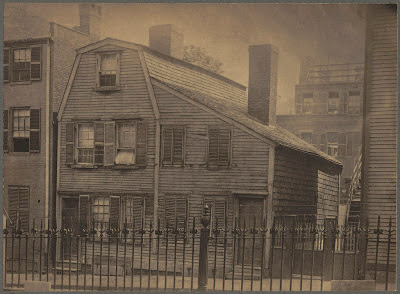And we have made a lot of progress in the four centuries since New England was first founded. Unsurprisingly, the early settlers in New England were staunchly opposed to any homosexual behavior. Equally unsurprising, there was plenty of it for them to oppose.
Most of the colonies had laws mandating death for anyone found guilty of homosexual acts (sodomy in the language of the day). For example, Plymouth Colony listed eight crimes punishable by death, including "sodomy, rape and buggery." Massachusetts Bay Colony had the following law:
If any man lyeth with man kinde as he lyeth with a woman, both of them have committed abhomination, they both shall surely be put to death.
Connecticut and New Hampshire had similar laws. Rhode Island had a category of capital crimes called "touching Whoremongers." Sodomy was among these laws. I don't like these laws, but the word "whoremonger" does roll off the tongue.
Despite the threat of the death penalty, there was still quite a bit of sodomy happening in the Puritan's theocratic colonies. Check out another post about "Olde Gay Puritans" here for a few details.
 |
| John Winthrop doesn't look it, but he was full of passion! |
I loved you truly before I could think you took any notice of me ...The apprehension of your love and worth together hath overcome my heart, and removed the veil of modesty, that I needs must tell you, my soul is knit to you, as the soul of Jonathan to David: were I now with you, I should bedew that sweet bosom with the tears of affection...
Governor Winthrop was heterosexual (he also presided over the execution in 1646 of one William Plaine for sodomy) but could still write words like that to another heterosexual man. Such were the customs of the time. Love between people of the same gender was acceptable, as long as a certain carnal line wasn't crossed.
There are lots of great things about the past, but this type of repression wasn't one of them. So again, let's hear it for progress and for being able to cross those lines.
I got my information from Improper Bostonians, which is published by The History Project.







